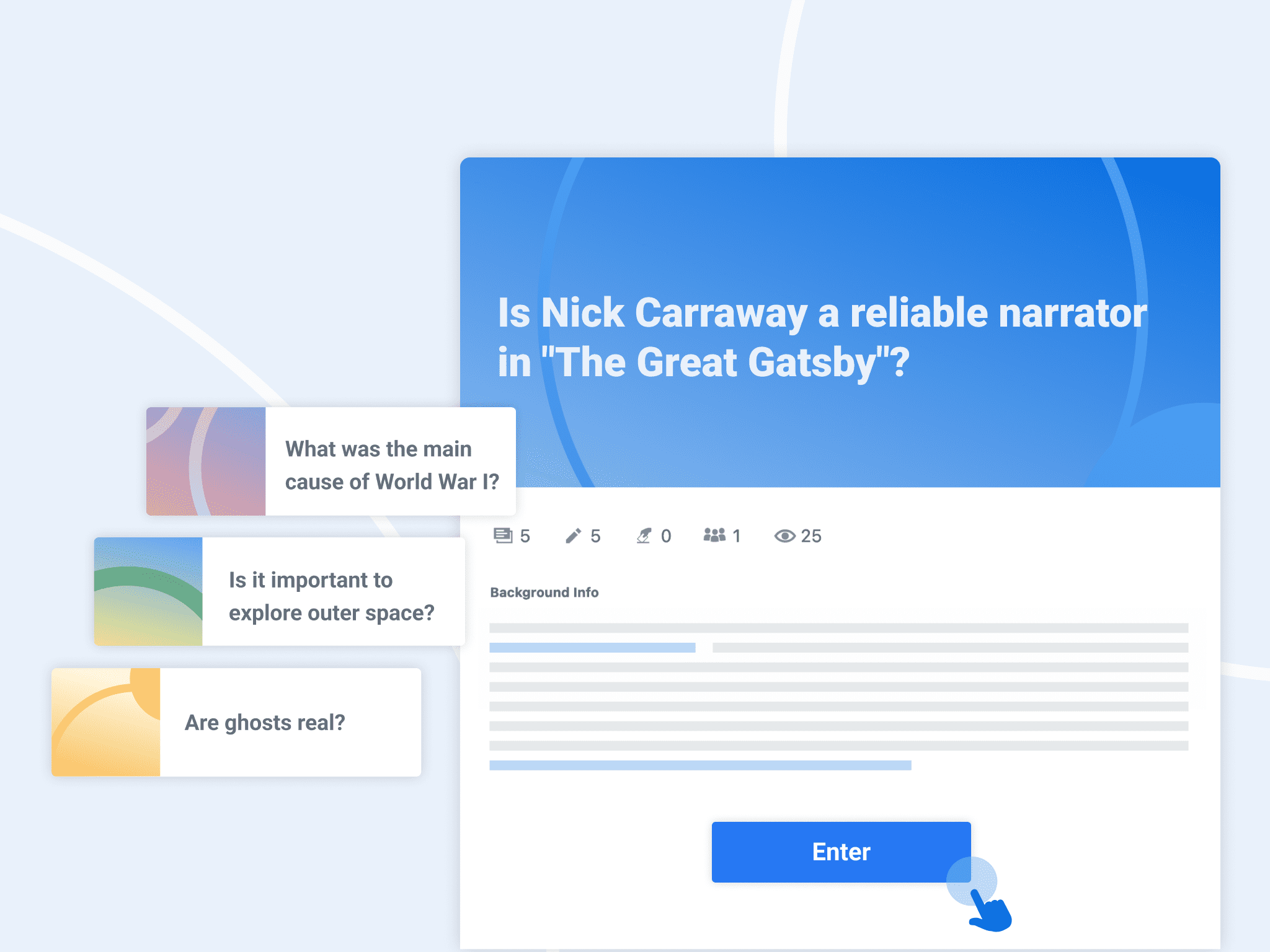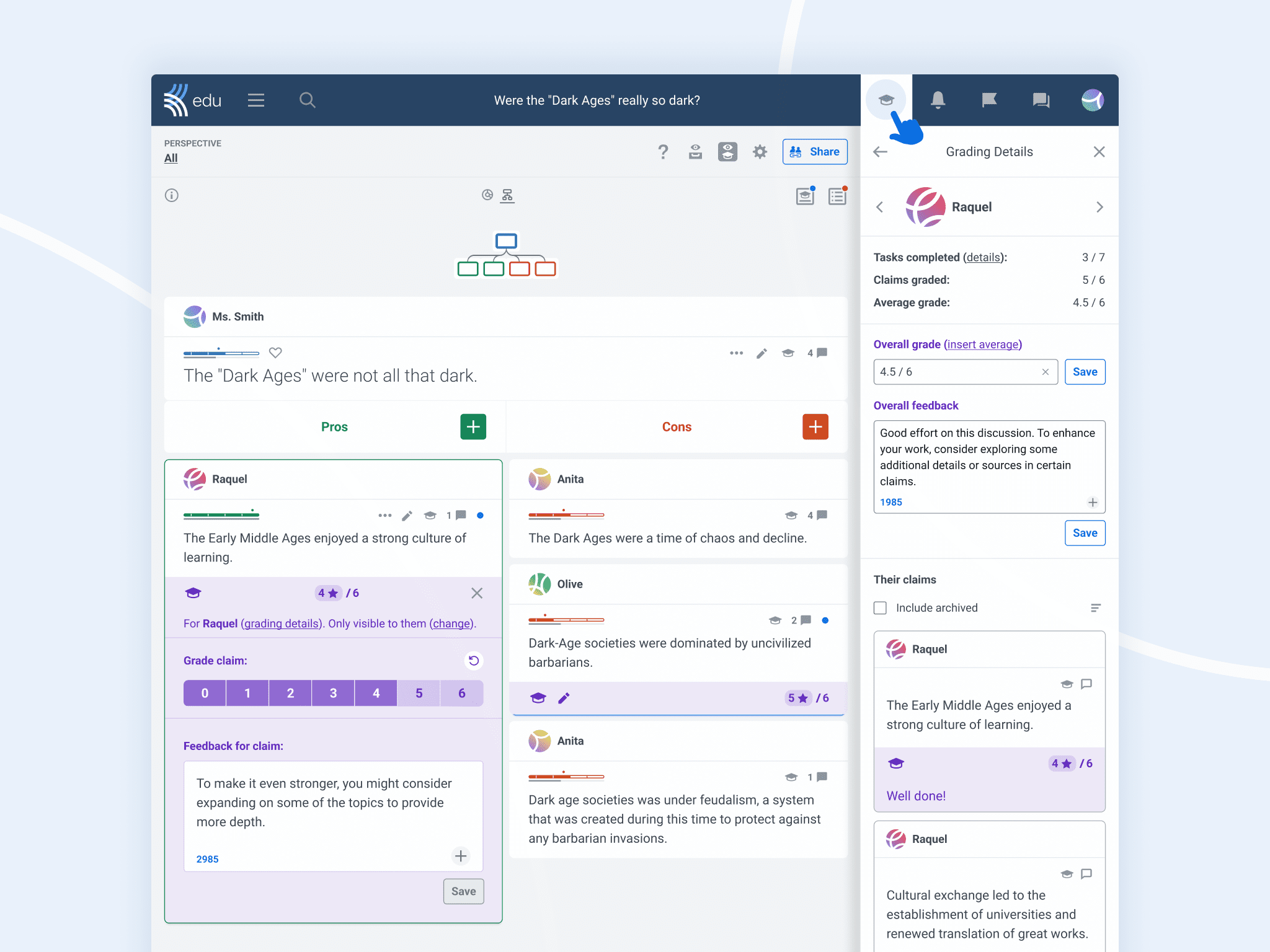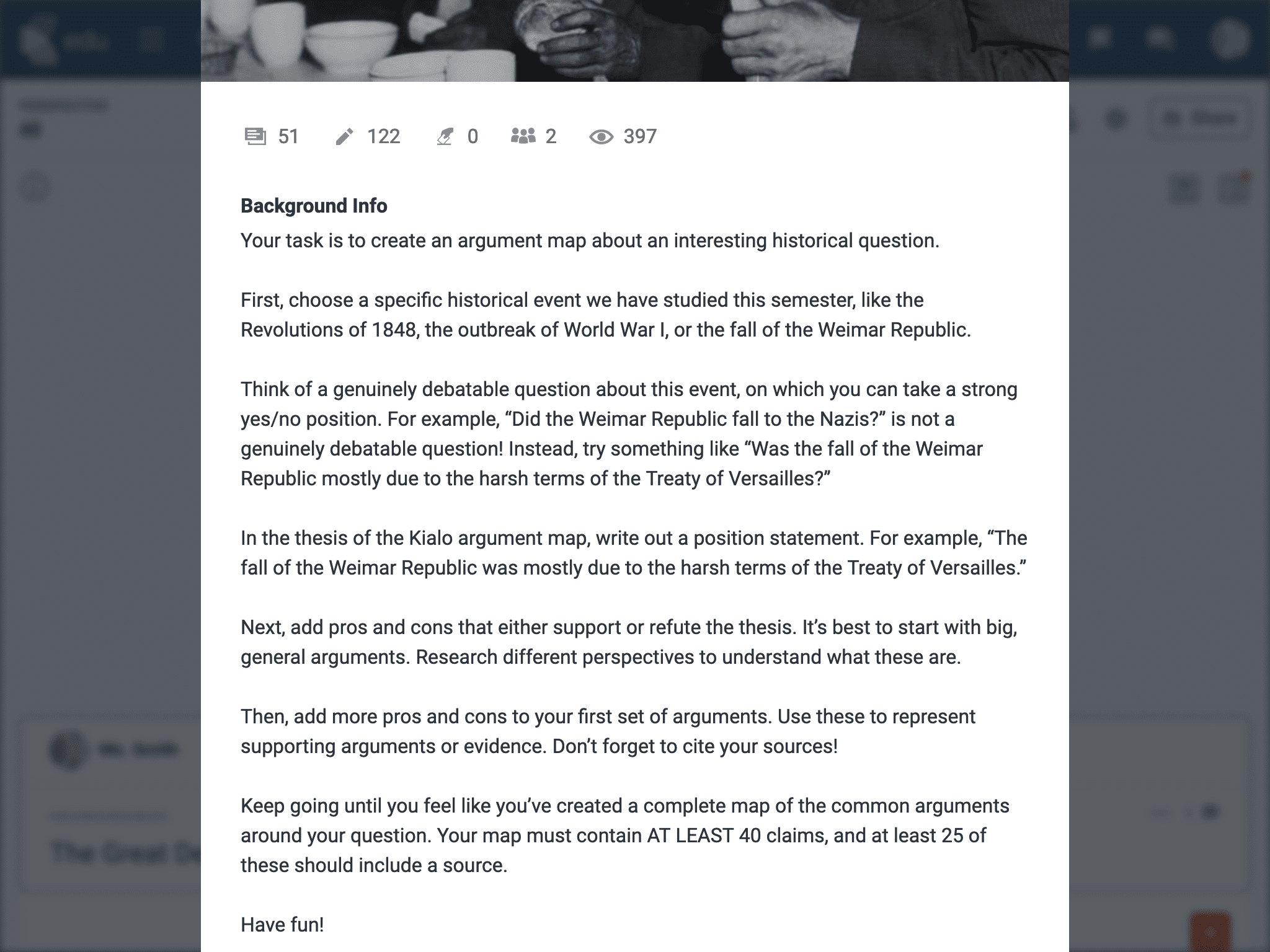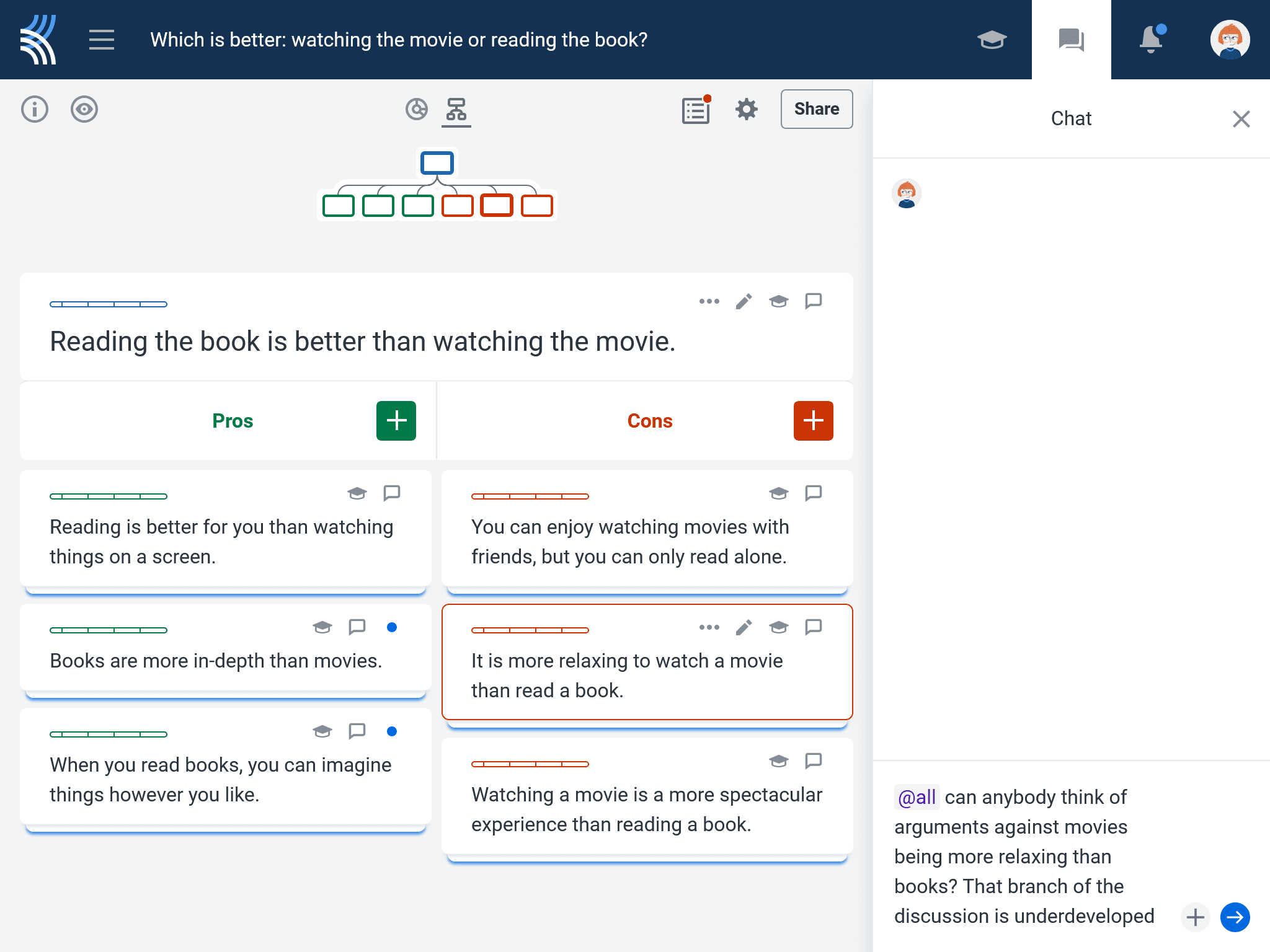Remote learning can be a great option for some students as it offers them flexible but effective options to accommodate their personal circumstances. However, learning from the comfort of one’s own home also presents its own unique challenges!
Kialo Edu can help teachers to get students involved and collaborating in a remote learning context. Let’s take a look at why our discussions are suited to the online classroom.
How Kialo Edu can support remote learning
For students learning from home, there are distractions abound, and it requires impressive displays of self-discipline to settle down to study.
Sustaining motivation and engagement can be tricky, while fewer opportunities for interaction can make it more difficult to build relationships with their teacher and classmates. That’s why using the right tools such as Kialo is essential to support students in the online classroom.
1. Students can access Kialo Edu discussions on any device
While technological advances have made online learning a dynamic and flexible educational option, students also have the usual technology-related obstacles to navigate. One of the most pressing issues is not having access to suitable devices.
If your students find themselves needing to study from a smartphone, teachers can rest assured that their learning is not suffering from it. You can have Kialo discussions with your students effectively on a range of platforms including tablets, smartphones, laptops, and desktops. You can even hold a discussion about the smartphone itself!
2. Use Kialo discussions as a time-saver activity
Converting print materials to an online context can take time. Teachers can quickly create their own Kialo Edu discussion to suit their lesson or homework needs and rest assured the technology side is taken care of! Our discussions are interactive, engaging, and easy to share with students.

And we already have an extensive debate topics library on curriculum topics — so take a look to see if we already have just what you need! Your students can discuss a range of diverse topics, from the French Revolution, to renewable energy, to space tourism.
3. Give effective and timely feedback to students in Kialo discussions

With remote learning, it can be easy to lose sight of how your students are managing with the material. Our discussions let teachers keep an eye on their students’ work from afar and step in when needed.
So, if you’ve noticed that one student seems to have misunderstood Hamlet’s downfall or the main cause of World War II, or is falling behind in terms of participation, you can give some guidance by leaving feedback directly on their work in the discussion with our handy built-in grading tool.
4. Use Kialo discussions as an organizational reference point for a topic
It’s not unusual for online learning to involve lots of moving parts. Whether you’re sharing lecture notes and slides or setting up assignments and offering extra reading and tasks, even the most organized among us can lose track of it all!

A Kialo Edu discussion can work as a reference point to pull together all the relevant information of a unit in an easily accessible way. The Background Info section is particularly useful for adding relevant links, retrieval practice questions, instructions, and important page numbers for students to refer to. That way, when students pop back in to review the content of a developed discussion, they’ll be able to make effective use of the study time available to them.
How to create an effective online learning environment for students
Being familiar with the practical side of teaching online is essential to giving students a successful learning experience. Once that’s taken care of, teachers can look at practices to support their students and encourage engagement. Here are some ways to set up an effective online learning environment with Kialo Edu.
1. Encourage regular communication and interaction between teacher and peers

Among the most important steps an educator can take towards cultivating an interactive and effective online learning environment is to establish open and responsive lines of communication. This is particularly important in remote learning contexts where students may have less contact and interaction with their peers and teachers.
For instance, making it a point to provide timely and personalized feedback can help sustain engagement and provide students with a sense of progress. Furthermore, building rapport among students can go a long way towards fostering a sense of community, which may come less naturally than in a physical classroom.
In a Kialo discussion, make students aware of the Discussion Chat. They can use it to ask questions and get a quick response from the teacher or other discussion participants outside contact hours. It is also a good spot to enjoy more informal interactions to build virtual connections.

2. Set clear expectations and instructions to provide a sense of structure
Outlining expectations clearly provides a sense of structure and clarity for students, helping them take ownership of their own learning. If they are unsure as to how to proceed or how to tackle an assignment, the lack of certainty can quickly feel overwhelming, while confusion can lead to reduced learning outcomes.
When using a Kialo discussion with your students, set a clear benchmark for participation by assigning Tasks so students can be sure they are meeting your expectations. Students will see their tasks checked off as they complete them, ensuring they don’t need to worry about including enough sources or engaging sufficiently with their peers’ contributions.
You can also lay out a clear path through the topic content by adding instructions to the Background Info. That way, students will have a clear reference as to what is expected of them.
3. Make the most of synchronous class time to engage students with lesson content
Traditional lectures during contact time may not work as well in remote learning contexts if students have been working alone all week. By making online class time more interactive, teachers can focus on ensuring students are engaging with the material in a meaningful way.
If you use a flipped classroom approach, teachers can share knowledge in a Kialo Edu discussion to serve as the input material as an alternative to lecture videos or required reading. To make the learning more active, ask students to comment on your claims as they read through it. That way, students can come to class with the background work done, ready to engage with whatever activity you have planned for them.
Alternatively, a Kialo Edu discussion can be an interactive activity during class time. Set the background reading and work for students to do at home, then create a discussion which requires them to apply what they’ve learned to a real-world situation. Not only will students see the relevance of the material they’re studying at home, but they’ll also recognize the value in their synchronous classes.
4. Add variety to online classes to keep engagement
Sitting in front of a screen can be tiring. Switching up activities can help keep your students more involved in the learning process! With Kialo Edu, teachers can use our format to deliver content to help students develop their critical thinking skills by exploring a thesis or collaborating on a problem-solving task.
Students can even use a discussion as an alternative way to demonstrate their understanding of a topic. Or, they can simply be a fun icebreaker activity to get students involved from the very start of a class!
Working from a distance can be tough, for students and teachers alike, but the benefits of remote learning are also plentiful when we get it right! We’d love to hear your ideas for remote learning to make such courses successful so please do get in touch on social media, or directly at feedback@kialo-edu.com.

